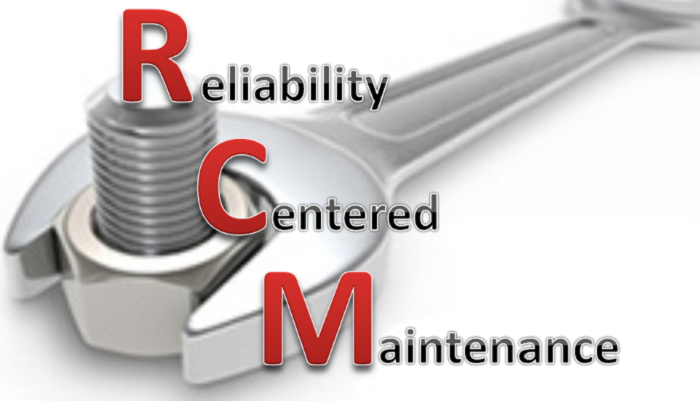Copyrights © RES Global 2025


RCM generally used to achieve improvements in fields such as the establishment of safe minimum levels of #maintenance, changes to operating procedures and strategies and the establishment of capital maintenance regimes and plans. Successful implementation of RCM will lead to increase in #cost #effectiveness, #machine #uptime, and a greater understanding of the level of #risk that the organization is managing.
The late John Moubray, in his book RCM2 characterized reliability-centered maintenance as a process to establish the safe minimum levels of maintenance. This description echoed statements in the Nowlan and Heap report from United Airlines.
Join our RCM training at Alexandria, Egypt, 6 May 2018, click here for more details
#RCM defined by the technical standard SAE JA1011, Evaluation Criteria for RCM Processes, which sets out the minimum criteria that any process should meet before it can be called RCM. This starts with the seven questions below, worked through in the order that they are listed:
1. What is the item supposed to do and its associated performance standards?
2. In what ways can it fail to provide the required functions?
3. What are the events that cause each #failure ?
4. What happens when each failure occurs?
5. In what way does each failure matter?
6. What systematic task can be performed proactively to prevent, or to diminish to a satisfactory degree, the consequences of the failure?
7. What must be done if a suitable preventive task cannot be found?
#Reliability #centered #maintenance is an engineering framework that enables the definition of a complete maintenance regimen. It regards maintenance as the means to maintain the functions a user may require of machinery in a defined operating context. As a discipline it enables machinery stakeholders to monitor, assess, predict and generally understand the working of their physical assets. This is embodied in the initial part of the RCM process which is to identify the operating context of the machinery, and write a #Failure #Mode #Effects and #Criticality #Analysis ( #FMECA ). The second part of the analysis is to apply the "RCM logic", which helps determine the appropriate maintenance tasks for the identified failure modes in the FMECA. Once the logic is complete for all elements in the FMECA, the resulting list of maintenance is "packaged", so that the periodicities of the tasks are rationalised to be called up in work packages; it is important not to destroy the applicability of maintenance in this phase. Lastly, RCM is kept live throughout the "in-service" life of machinery, where the effectiveness of the maintenance is kept under constant review and adjusted in light of the experience gained.
RCM can be used to create a cost-effective maintenance strategy to address dominant causes of equipment failure. It is a systematic approach to defining a routine maintenance program composed of cost-effective tasks that preserve important functions.
Join our RCM training at Alexandria, Egypt, 6 May 2018, click here for more details
The important functions (of a piece of equipment) to preserve with routine maintenance are identified, their dominant failure modes and causes determined and the consequences of failure ascertained. Levels of criticality are assigned to the consequences of failure. Some functions are not critical and are left to "run to failure" while other functions must be preserved at all cost. Maintenance tasks are selected that address the dominant failure causes. This process directly addresses maintenance preventable failures. Failures caused by unlikely events, non-predictable acts of nature, etc. will usually receive no action provided their risk (combination of severity and frequency) is trivial (or at least tolerable). When the risk of such failures is very high, RCM encourages (and sometimes mandates) the user to consider changing something which will reduce the risk to a tolerable level.
The result is a maintenance program that focuses scarce economic resources on those items that would cause the most disruption if they were to fail.
RCM emphasizes the use of predictive maintenance (PdM) techniques in addition to traditional preventive measures.
The RCM process described in the DOD/UAL report recognized three principal risks from equipment failures: threats
Modern RCM gives threats to the environment a separate classification, though most forms manage them in the same way as threats to safety.
RCM offers five principal options among the risk management strategies:
RCM also offers specific criteria to use when selecting a risk management strategy for a system that presents a specific risk when it fails. Some are technical in nature (can the proposed task detect the condition it needs to detect? does the equipment actually wear out, with use?). Others are goal-oriented (is it reasonably likely that the proposed task-and-task-frequency will reduce the risk to a tolerable level?). The criteria are often presented in the form of a decision-logic diagram, though this is not intrinsic to the nature of the process.
To know more, Join our RCM training at Alexandria, Egypt, 6 May 2018, click here for more details
Contact RES Global's training advisor today at +201064749611 or send an email to training@resglobal.org
RES Global offers onsite maintenance & reliability consulting & training services and multiple public classes and seminars throughout the year. Call us today.
Visit our website to learn more about us